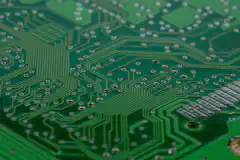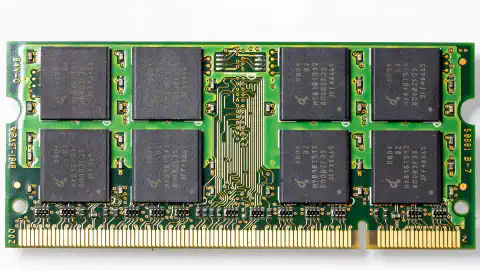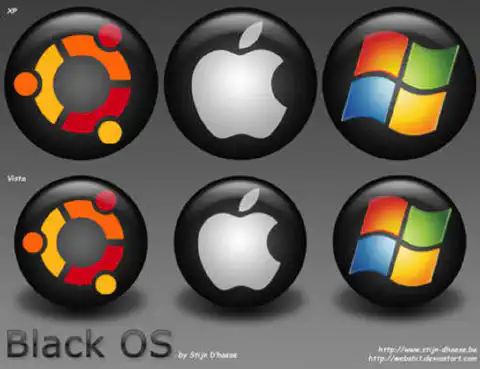Essential Power: How the Motherboard Battery Keeps Your PC Running

Table of Contents
The Little Battery on the Motherboard: Why It’s Crucial for Your PC
The little battery on the motherboard may seem insignificant, but it plays a crucial role in the functioning of your PC. This small power source is responsible for powering the CMOS, preserving BIOS settings, enabling timekeeping, facilitating system boot, and supporting hardware detection. In this article, we will explore the importance of the little battery on the motherboard and why it is essential for the smooth operation of your computer.
Key Takeaways
- The little battery on the motherboard powers the CMOS, which stores essential system information.
- It preserves BIOS settings, ensuring that your computer starts up with the correct configurations.
- The battery enables timekeeping, allowing your computer to maintain accurate system time even when powered off.
- It facilitates system boot by providing the necessary power for the motherboard to initialize.
- The battery supports hardware detection, allowing your computer to identify and communicate with connected devices.
The Importance of the Little Battery on the Motherboard
Powering the CMOS
The little battery on the motherboard plays a crucial role in powering the CMOS (Complementary Metal-Oxide-Semiconductor) chip. This chip is responsible for storing the BIOS (Basic Input/Output System) settings, including information about hardware components and system configuration. Without power from the battery, the CMOS chip would lose its stored data and the BIOS settings would be reset to default every time the computer is turned off.
- The battery ensures that the CMOS chip remains powered even when the computer is not in use.
- It provides a constant source of power to maintain the stored BIOS settings.
- This allows the computer to remember important information such as the boot order, system date and time, and other configuration settings.
- The battery also ensures that the computer can start up quickly by providing power to the CMOS chip during the boot process.
Tip: It is important to periodically check the battery on the motherboard and replace it if necessary to prevent loss of BIOS settings and potential system issues.
Preserving BIOS Settings
The little battery on the motherboard plays a crucial role in preserving BIOS settings. BIOS stands for Basic Input/Output System, which is responsible for initializing and configuring hardware components during the boot process. Here’s why the little battery is important for preserving BIOS settings:
- Power backup: The battery provides a continuous power supply to the CMOS (Complementary Metal-Oxide-Semiconductor) chip, which stores the BIOS settings. This ensures that the settings are not lost when the computer is turned off or unplugged.
- Maintaining date and time: The battery enables the CMOS chip to keep track of the current date and time. This is important for various system functions, such as scheduling tasks and accurate file timestamps.
- Retaining custom configurations: If you have customized the BIOS settings to optimize your system’s performance or enable specific features, the battery ensures that these configurations are preserved even when the power is disconnected.
By preserving BIOS settings, the little battery on the motherboard ensures that your computer boots up with the correct configurations and maintains its functionality over time.
Enabling Timekeeping
The little battery on the motherboard plays a crucial role in enabling timekeeping on your PC. Without this battery, your computer would not be able to keep track of the current time and date. Here are some key points to understand about how the little battery enables timekeeping:
- The battery provides power to the CMOS (Complementary Metal-Oxide-Semiconductor) chip, which stores the BIOS (Basic Input/Output System) settings, including the system clock.
- When the computer is turned off, the battery ensures that the CMOS chip remains powered, allowing it to retain the time and date information.
- This enables your computer to accurately display the current time and date even after it has been shut down and restarted.
- The battery also helps in maintaining the accuracy of the system clock by providing a stable power source.
By enabling timekeeping, the little battery on the motherboard ensures that your PC always has the correct time and date, which is essential for various tasks such as scheduling, file organization, and system synchronization.
Facilitating System Boot
The little battery on the motherboard plays a crucial role in facilitating the system boot process. Here are some key points to understand:
The battery provides power to the CMOS (Complementary Metal-Oxide-Semiconductor) chip, which stores the BIOS (Basic Input/Output System) settings. Without power from the battery, the CMOS chip would lose its stored information, resulting in the system booting with default settings.
By preserving the BIOS settings, the battery ensures that the system boots up with the correct configuration. This is especially important when it comes to hardware compatibility and system stability.
In addition to preserving BIOS settings, the battery also enables timekeeping on the motherboard. It ensures that the system clock continues to run even when the computer is powered off.
The battery’s role in timekeeping is crucial for various system functions, such as scheduling tasks, logging events, and maintaining accurate timestamps.
Furthermore, the battery supports the detection of hardware components during the boot process. It provides the necessary power for the motherboard to identify and initialize connected devices.
Without the battery, the system may fail to detect certain hardware components, leading to compatibility issues and potential system failures.
It is important to periodically check the battery’s health and replace it if necessary. A weak or dead battery can cause issues with system booting and timekeeping.
Tip: To ensure uninterrupted system boot and proper functioning, it is recommended to replace the motherboard battery every 3-5 years.
Supporting Hardware Detection
The little battery on the motherboard plays a crucial role in supporting hardware detection. Here are some key points:
- The battery provides power to the CMOS (Complementary Metal-Oxide-Semiconductor) chip, which stores important system information.
- Without the battery, the CMOS chip would lose power and reset, resulting in the loss of BIOS settings and system configuration.
- By preserving BIOS settings, the battery ensures that the motherboard recognizes and detects connected hardware devices.
- This enables the system to properly initialize and communicate with peripherals such as hard drives, graphics cards, and USB devices.
- The battery also helps maintain the system clock, allowing accurate timekeeping even when the computer is powered off.
Remember to periodically check the battery’s health and replace it if necessary to ensure uninterrupted hardware detection and system functionality.
The Importance of the Little Battery on the Motherboard
In conclusion, the little battery on the motherboard plays a crucial role in the overall functionality and performance of your PC. It powers the CMOS, preserving important BIOS settings and enabling accurate timekeeping. Additionally, it facilitates system boot and supports hardware detection. Without this small but mighty component, your computer would not be able to function properly. So, next time you open up your PC, remember to appreciate the significance of the little battery on the motherboard and the impact it has on your computing experience.
Frequently Asked Questions
1. How long does the little battery on the motherboard last?
The lifespan of the little battery on the motherboard can vary depending on the usage and quality of the battery. On average, it can last between 3 to 5 years.
2. What happens if the little battery on the motherboard dies?
If the little battery on the motherboard dies, the CMOS settings will be reset to their default values, and the system may have trouble booting up properly. It is recommended to replace the battery as soon as possible.
3. Can I replace the little battery on the motherboard myself?
Yes, replacing the little battery on the motherboard is a relatively simple task. You can purchase a replacement battery from most electronics stores and follow the instructions in your motherboard’s manual to replace it.
4. How do I know if the little battery on the motherboard needs to be replaced?
If you notice that your computer’s clock is consistently incorrect, BIOS settings are being reset, or the system is having trouble booting up, it may be a sign that the little battery on the motherboard needs to be replaced.
5. Can I use any type of battery as a replacement for the little battery on the motherboard?
No, it is important to use the correct type of battery as a replacement for the little battery on the motherboard. Most motherboards use a CR2032 lithium coin cell battery.
6. Are there any precautions I should take when replacing the little battery on the motherboard?
When replacing the little battery on the motherboard, make sure to turn off the computer and unplug it from the power source. Handle the battery with care and avoid touching the contacts with your bare hands. Follow the instructions in your motherboard’s manual for safe replacement.






